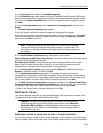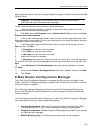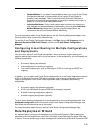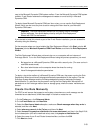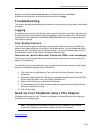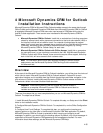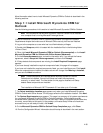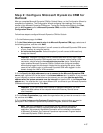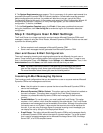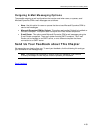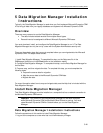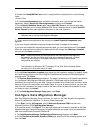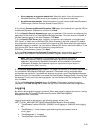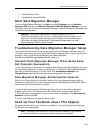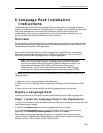
Microsoft Dynamics CRM 4.0 Installing Guide
4-38
6. The System Requirements page appears. This is a summary of all system requirements for a
successful Microsoft Dynamics CRM for Outlook installation. Failed checks must be corrected
before configuration can continue. If a problem will take time to correct, cancel the Office
Configuration Wizard at this point, fix the problem and restart the Office Configuration Wizard. All
errors must be resolved. If no errors, or if only warnings appear, you can continue with the
configuration. To do this, click Next.
7. On the Configuration Complete page, click Finish. If there was a problem that occurred
during the installation, click View the log file to review the log file for information about the
configuration.
Step 3: Configure User E-Mail Settings
The E-mail Router is no longer required to send and receive Microsoft Dynamics CRM e-mail
messages. Instead of using the E-mail Router, Microsoft Dynamics CRM for Outlook can be used
to perform the following tasks:
• Deliver received e-mail messages to Microsoft Dynamics CRM.
• Send e-mail messages that are generated from Microsoft Dynamics CRM.
User and Queue E-Mail Configuration
The e-mail messaging incoming and outgoing options can be set differently for each user or
queue. These incoming and outgoing options are configured on the User form. To open a user
form, in the Navigation Pane, click Settings. Under Settings, click Administration. Then, in the
Administration area click Users, and then double-click the user that you want.
Note By default, Microsoft Dynamics CRM sets both the incoming e-mail server
type and the outgoing e-mail server type to Microsoft Dynamics CRM for Outlook.
For more information about these types, see the following section.
Incoming E-Mail Messaging Options
The incoming e-mail configurations that can be used when a user or a queue receives Microsoft
Dynamics CRM e-mail messages are as follows:
• None. Use this option for users or queues that do not use Microsoft Dynamics CRM to
send e-mail messages.
• Microsoft Dynamics CRM for Outlook. This option requires that Outlook be installed on
the user’s computer. This option does not require the E-mail Router component.
However, to process Microsoft Dynamics CRM e-mail messages, Outlook must be
running. .
• Forward Mailbox. To use this option, you must install the E-mail Router. This option
requires a “sink” mailbox, which must be created by the administrator. The E-mail Router
processes e-mail messages that are forwarded to this mailbox. Although this option does
not require users to run Outlook, it does require that a server-side rule be deployed for
the user. If you are using Exchange Server to process incoming e-mail messages, you
can deploy the rule by using the Rule Deployment Wizard.
• E-mail Router. This option delivers Microsoft Dynamics CRM e-mail messages directly
to Microsoft Dynamics CRM, without the need of a forward mailbox. The e-mail system
that is used to process messages can be Microsoft Exchange Server 2003, Exchange
Server 2007, or a POP3-compliant server.



